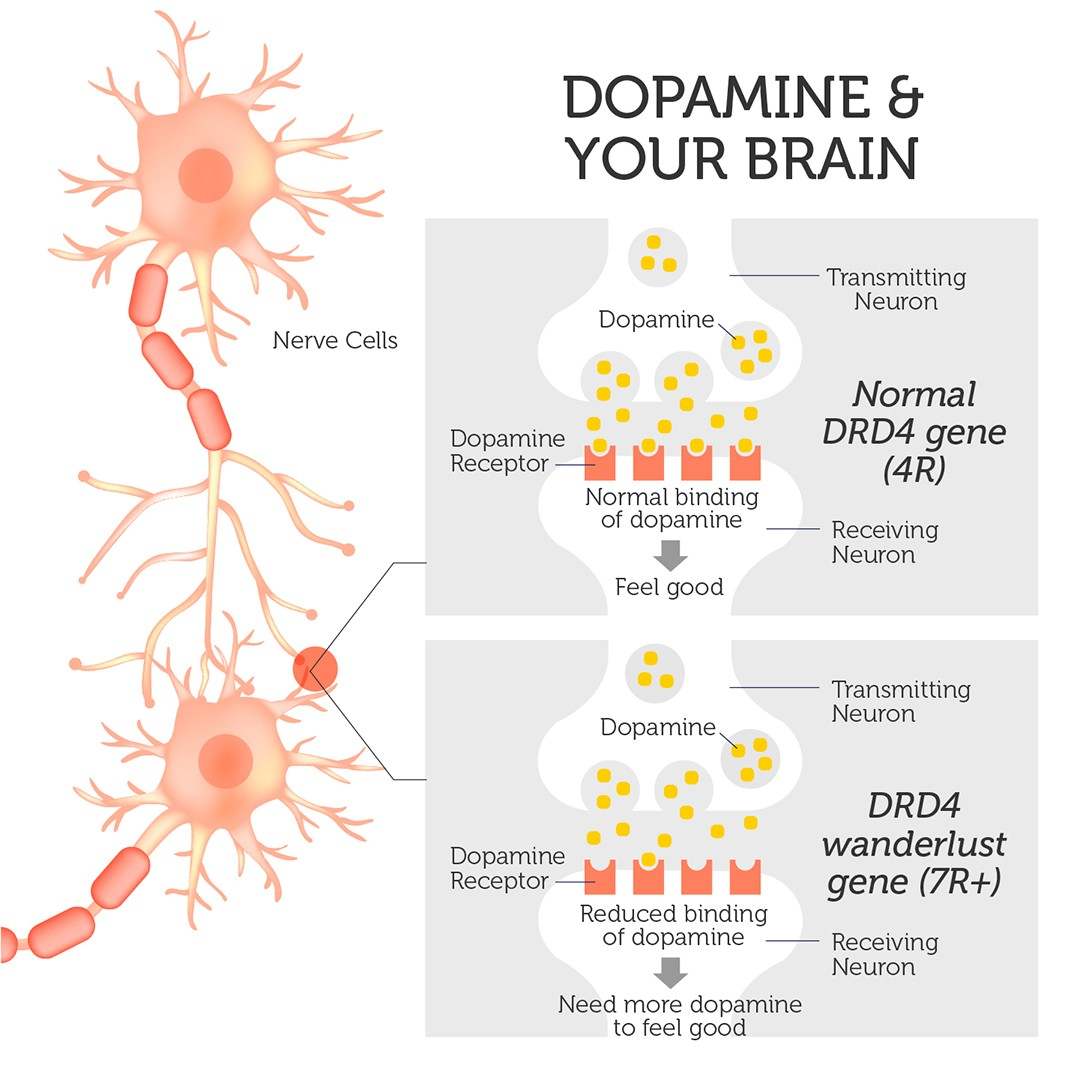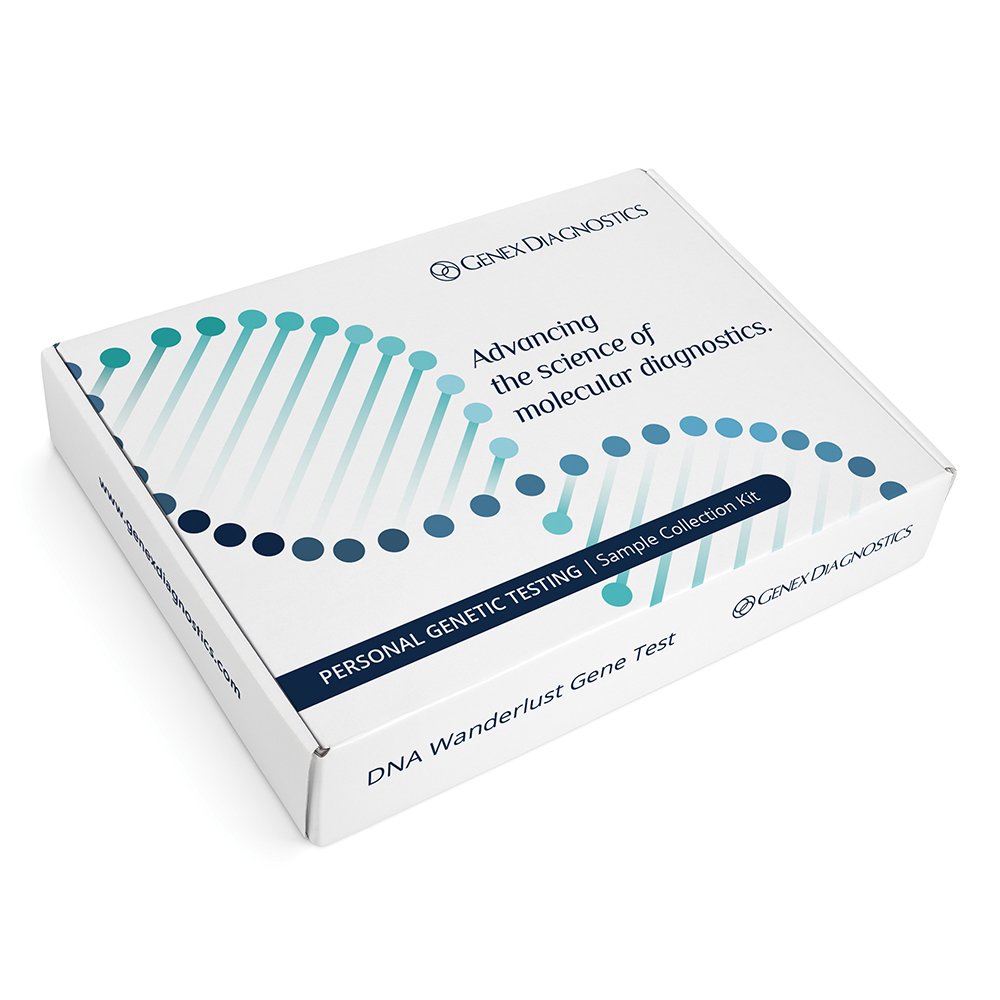Detailed Description
The “wanderlust” gene is a genetic variant of the DRD4 gene. This variant is also known as the 7R+ version of the dopamine receptor.
Dopamine is a neurotransmitter or a chemical made in the brain that gives us feelings of reward and pleasure. The dopamine receptor D4 (encoded by the DRD4 gene) binds dopamine and transmits the signal into the cells.
The “wanderlust” variant of DRD4 binds dopamine less efficiently, compared to the common 4R version. As a result reduced levels of the dopamine “feel good” signal is transmitted in the brain.
People with this variant need higher dopamine levels to achieve the same “feel good” effects, and appear to increase dopamine levels through novelty-seeking behaviour such as traveling, exploring and sexual activity.
- Are you an explorer by nature?
- Do you constantly daydream about exploring uncharted territories or trying new things?
Learning more about your genetic make-up can help you to understand your personality better, and help you plan your lifestyle in terms of career directions and types of projects to match your unique DNA.


